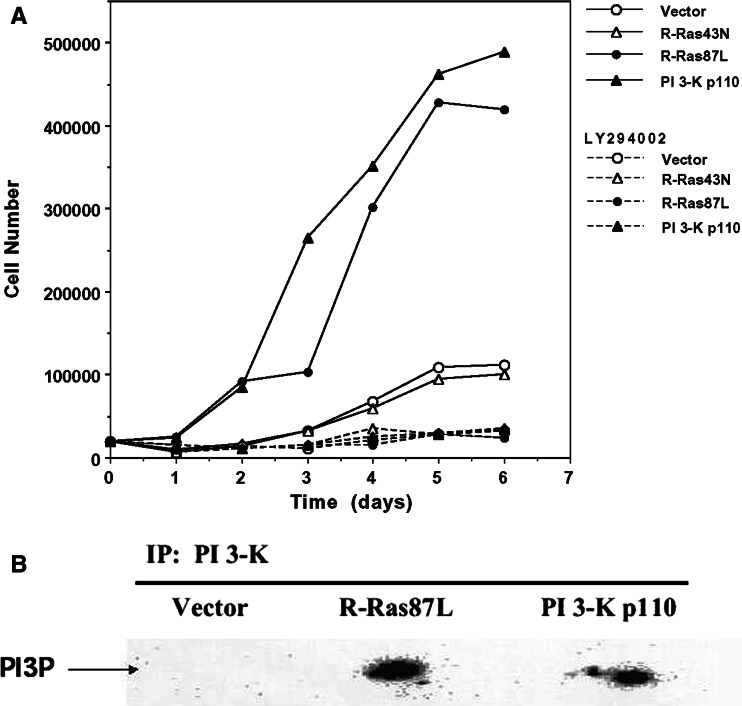Fig. 1.
R-Ras promotes accelerated in vitro growth of cervical epithelial cells via PI 3-K. a 2 × 104 vector-transfected C33A cells (open circles), activated R-Ras87L-transfected C33A cells (solid circles), dominant negative R-Ras43N-transfected C33A cells (open triangles), or activated PI 3-K p110-transfected C33A cells (closed triangles), were plated in wells of a six-well plate and cultured for 1 week. Cells from each well were trypsinized, resuspended, and counted every day. Some cells were cultured in the presence of 25 μM LY294002 (dashed lines). Data are from one of four different experiments that yielded similar results. b PI 3-K was immunoprecipitated from cell lysates of 1 × 107 vector-transfected C33A cells (vector), activated R-Ras-transfected C33A cells (R-Ras87L), or activated PI 3-K p110-transfected C33A cells (PI 3-K p110). PI 3-K was then measured by an in vitro kinase assay. Phosphatidylinositol-3-phosphate (PI3P). Data are representative of two separate experiments

